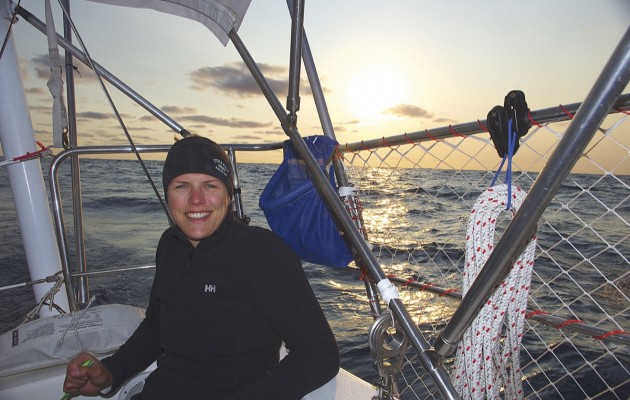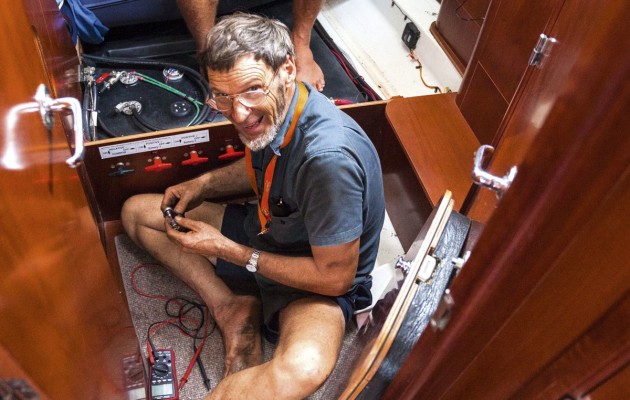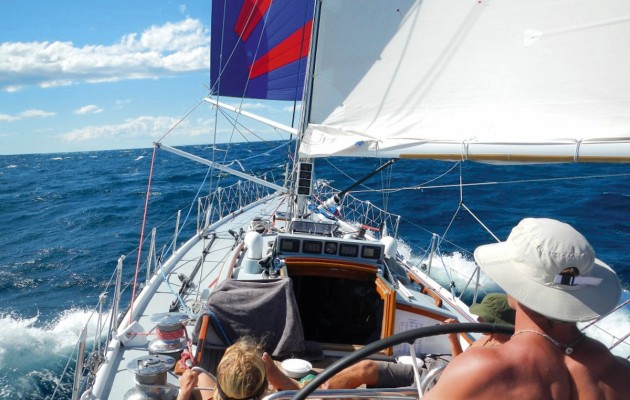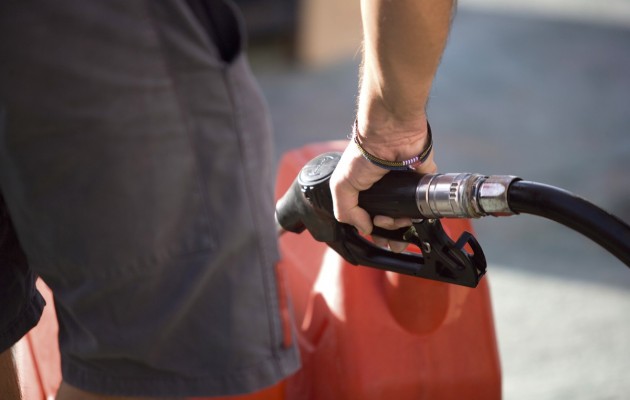Here are our top expert tips on sailing back across the Atlantic to Europe after a season in the Caribbean or the US East Coast
3. Get ready for the cold
This might seem like obvious advice, but stock up on plenty of warm clothes. After a season or two in the Caribbean, the return to colder nights and wet conditions came as a bit of a shock to some ARC Europe rally crews, even when they knew they were in for a change.
Those who have been in the Tropics for some time may not have heavier-weight foulweather gear, thermals, boots and warm blankets or sleeping bags aboard and will need to get these unwelcome items, particularly for night watches.
“In the day you can be in a T-shirt and shorts, but it gets cold at night. I’d say take thermal trousers or fleece salopettes, plus a lightweight fleece and full oilskins,” comments Stuart Letton, owner and skipper of Time Bandit, an Island Packet 45.
Several crews I spoke to who had taken a more northerly route talked about how little they changed and showered during the crossing. “It was rolling so badly that showering was too hard work even though we’ve got seats in there,” says one crewmember. “We used lots and lots of baby wipes.”
Welcome back to sailing just like it is at home!
4. Take extra crew
This is good advice for any ocean crossing. Couples, in particular, can struggle with sleep deprivation if there is a problem or major gear breakage, most notably an autopilot failure. Often insurance companies will insist on a minimum of three experienced crew for this passage.
Unlike a downwind passage in the Trades, reefing and sailplan changes are more frequent on this route and there is a risk of strong winds and uncomfortable cross seas. Quite a few people arriving in the Azores from Bermuda in May report experiencing winds of 40 knots plus.
Those who had nevertheless sailed to the Azores two-handed had mixed feelings about it.
“This is harder in every way than [crossing east to west],” remarked one skipper. “I think that you need one sailor, one engineer and one electrician.”
Anne Letton on Time Bandit, an Island Packet 45, felt that going two-handed, although hard, was preferable to casual crew. “I was a lot happier on our own. We’ve sailed together for 30 years. When you have other parties you don’t know so well you’re doing more work keeping your eyes open. Women agree that when you have others on board you become the caterer and that’s hard.”
Her husband, Stuart, comments: “The skipper will never get good-quality sleep whether there is one other person or five. The only solution would be to have two skippers: ie someone else really experienced you have total confidence in.”
David and Susan Mackay were returning home after two circumnavigations on their Amel Super Maramu 2000 Voyageur, covering 60,000 miles. All their ocean passages were sailed two-handed. For once they’d planned on taking one extra crew, a friend, but he had to pull out at the last minute. “We were a bit gutted. I was quite sleep-deprived,” says Susan. “This way is more tiring and I’d recommend more crew if possible.”
5. Stock up on spares
Rigging spares, Norseman terminals for repairing rigging and items for carrying out other forms of jury rig are well worth reviewing after a lay period in the Caribbean. See our tips on page 3 for more on the subject.
Do think about taking spare running rigging as well because, with greater motion and variation of wind strength and direction on this route, chafe can be a serious issue.
Stuart Letton of Time Bandit comments: “It’s is a huge problem when you’re on the same tack for such a long time. We went through three sets of genoa sheets and two halyards. If you get the rub wrong, brand new rope can chafe in a day.”
“We put [webbing] sleeves over the genoa sheets, but we went through two anti-chafe wraps where they went through the jaws of the pole. You have to adjust the position frequently,” he advises.
6. Reappraise your downwind sails
If you get your timing right and find a weather window you should have good following winds out of Bermuda or north-east of the Lesser Antilles for the first part of the voyage to the Azores. If you’re lucky it may be downwind or beam reaching most of the way. So you do need to think about downwind sails as well as manageable combinations for going upwind.
Most people I spoke to mentioned cross-seas and ‘huge gunwale to gunwale rolling’, which makes carrying a spinnaker stressful. So a gennaker might be the better option. “I’d get a gennaker for going deep downwind in heavy cloth, with a sock,” says Stuart Letton. “And if I was going the whole circuit, the Parasailor is a subject I’d certainly visit.”
That said, like many fellow crews the Lettons managed (albeit with sheet chafe) under plain sail. Setting up twin headsails is also an easy way for a small crew to make steady progress deep downwind.
Several people told us cutter rigs came into their own sailing in this direction and praised the reassurance of having a permanently rigged staysail ready to go.
7. Take extra fuel (and filters)
If you are planning on taking a more southerly route, extra fuel may be a consideration, and likewise essential engine spares such as fuel filters (and see Duncan Sweet’s caution about the effects of dirty fuel on the next page).
Among skippers I talked to, motoring hours varied according to the route taken and the skipper’s patience, but some yachts motored the equivalent of four or five days. The reason for making best speed is that the longer you are out there, the more likely you are eventually to be overtaken by strong winds.
Dennis Williams, owner of Gwawr, a Sun Odyssey 52.2, bought extra jerrycans in Antigua “as I intended to take the southerly route. We did 100 hours’ motoring in the 12-day crossing so it was quite substantial. If the speed dropped, we weren’t saving fuel.”
8. Keep cooking simple
The motion on this route makes meal preparation a real chore, everyone agreed. Knowing this, most crews had provisioned to keep things as easy as possible.
Dennis Williams’s crew had pre-cooked and frozen 20 meals before leaving. “It cuts down on the cooking and the amount of gas used,” he says. Susan Mackay used lots of tins and made one-pot dishes – “anything that would make my life easier,” she says.
Anne Letton had an ingenious idea that deserves to catch on. She uses a slow cooker called Mr D’s Eco Friendly Thermal Cooker. “You put the meat you want – mince, beef or chicken portions – add the vegetables, fill the pot almost full, bring to boil in 15 or 20 minutes then turn off the gas and close the lid,” she explains.
Once cool to the touch, the pot was lashed down out of the way until it was time for dinner. “We prepared the food at 1100 and the meal would be cooked and still hot at 1800 or 1900.” And the saving on gas is considerable.
Another shortcut used by the Lettons was to dish up food, raceboat style, into dog bowls with non-slip bottoms as these do not tip no matter what the motion.
Next page: gear and equipment tips, and how to avoid the typical things that tend go wrong….








